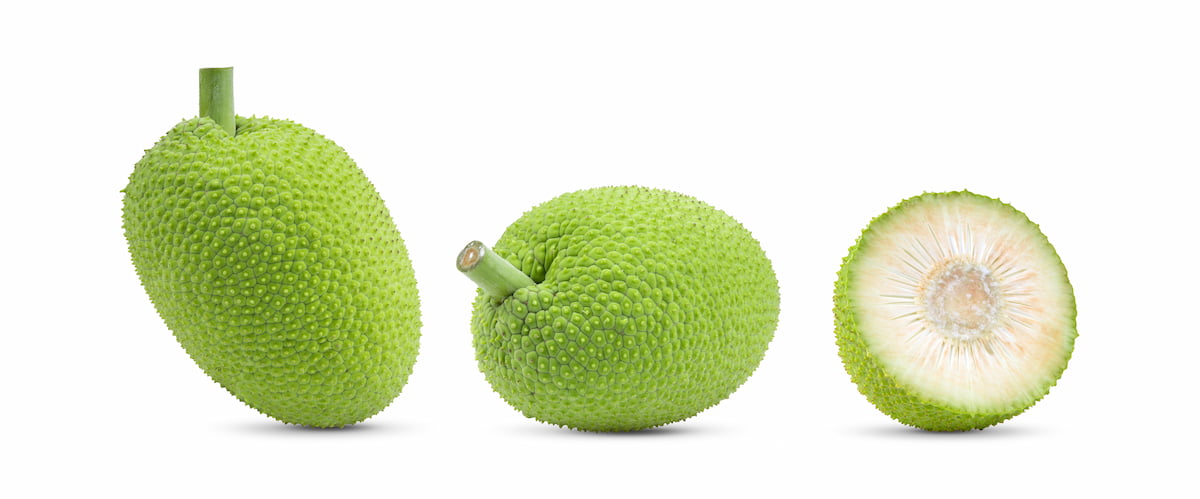Breadfruit is a tree that belongs to the mulberry family. It is native to the South Pacific islands and is now cultivated in tropical regions worldwide. Breadfruit is a staple food in many parts of the world and is highly valued for its nutritional content.

In India, breadfruit farming is gaining popularity due to its high nutritional value and the potential for economic gains. The fruit is rich in carbohydrates, fiber, vitamins, and minerals, making it an ideal food source for people in areas where food security is a concern. Breadfruit can also be used to produce flour, which can be used to make a variety of food products.
Breadfruit Farming and Cultivation Practices
Breadfruit trees can be grown in various soil types, although they prefer well-draining soil with a pH between 6.0 and 7.5. The trees require much sunlight and can grow up to 20 meters tall. The optimal temperature range for breadfruit cultivation is between 20°C and 30°C, with a minimum temperature of 15°C.
Propagation
Breadfruit trees can be propagated through seeds, root cuttings, or air layering. The most common method of propagation is through seeds. The seeds are collected from mature fruit, washed, and planted in a well-draining soil mixture. The seedlings should be transplanted to their permanent location when they are about six months old.
Planting
Breadfruit trees should be planted in a location that receives plenty of sunlight and is sheltered from strong winds. The trees should be planted in a hole twice the size of the root ball and filled with soil and compost. The planting distance between trees should be at least 8 meters for optimal growth.
Irrigation
Breadfruit trees require regular watering, especially during the first few months after planting. The trees should be watered deeply once or twice a week depending on the weather conditions. During the rainy season, the trees may not require as much irrigation.
Fertilization
Breadfruit trees require regular fertilization to promote optimal growth and fruit production. Once every three months, you can apply a well-balanced fertilizer with equal parts nitrogen, phosphorous, and potassium in its composition. The fertilizer should be applied around the tree’s base and watered in.
Pruning
Breadfruit trees should be pruned annually to remove dead or damaged branches and to promote optimal fruit production. The pruning should be done during the dormant season to avoid damage to the tree. The trees should also be pruned to maintain a height that is easy to harvest.
In case you missed it: Lentil Production Guide: A Step-By-Step Cultivation Practices

Pest and Disease Management
Breadfruit trees are susceptible to a variety of pests and diseases. Common pests include fruit flies, scale insects, and mealybugs. Diseases include leaf spots, root rot, and powdery mildew. Regular monitoring and prompt treatment are necessary to prevent significant tree damage. Organic pest and disease control methods are preferred, as they are less harmful to the environment and people.
Harvesting
Breadfruit trees can produce fruit year-round, with peak production occurring during the rainy season. The fruit should be harvested when it is fully mature but not overripe. The fruit is typically harvested by hand, and care should be taken not to damage the fruit or the tree.
In case you missed it: Oats Production Guide: A Step-By-Step Cultivation Practices

Conclusion
Breadfruit farming has the potential to provide a sustainable source of food and income in India. The trees are easy to grow and maintain, and the fruit is highly nutritious and versatile. With proper cultivation practices, breadfruit farming can be a profitable enterprise that can contribute to food security and economic development in many regions of India. Farmers can benefit from the high demand for breadfruit in local and international markets.
- Ultimate Guide to Ossabaw Island Hog: Breeding, Raising, Diet, and Care
- Ultimate Guide to Juliana Pig: Raising Facts, Size, Diet, Care, and Lifespan
- Raising Lleyn Sheep: Disadvantages, Price, Uses, Characteristics, and Care
- Ultimate Guide to Meishan Pig: Breed Facts, Breeding, Raising, and Care
- Ultimate Guide to Teacup Pigs: Raising, Diet, Lifespan, Cost, and Care
- Guide to Raising Poll Dorset Sheep: Facts, Profile, Characteristics, Uses, and Care
- Ultimate Guide to Bighorn Sheep: Characteristics, Diet, Lifespan, Breeding, and Lifecycle
- Ultimate Guide to Raising Katahdin Sheep: Farming Facts, Breed Profile, Uses, and Care
- Ultimate Guide to Raising Oreo Cows: Belted Galloways Farming Facts, Profile, Uses, and Care